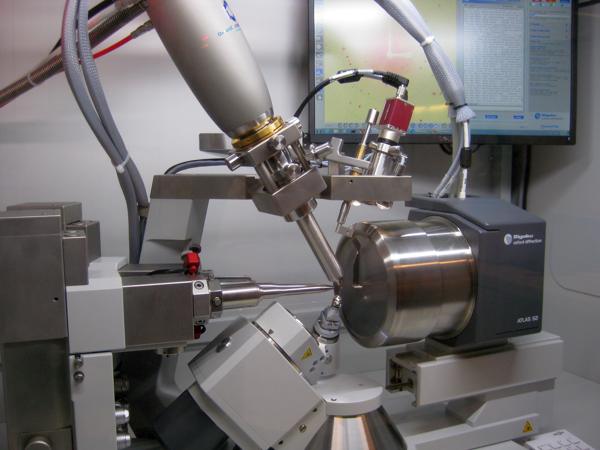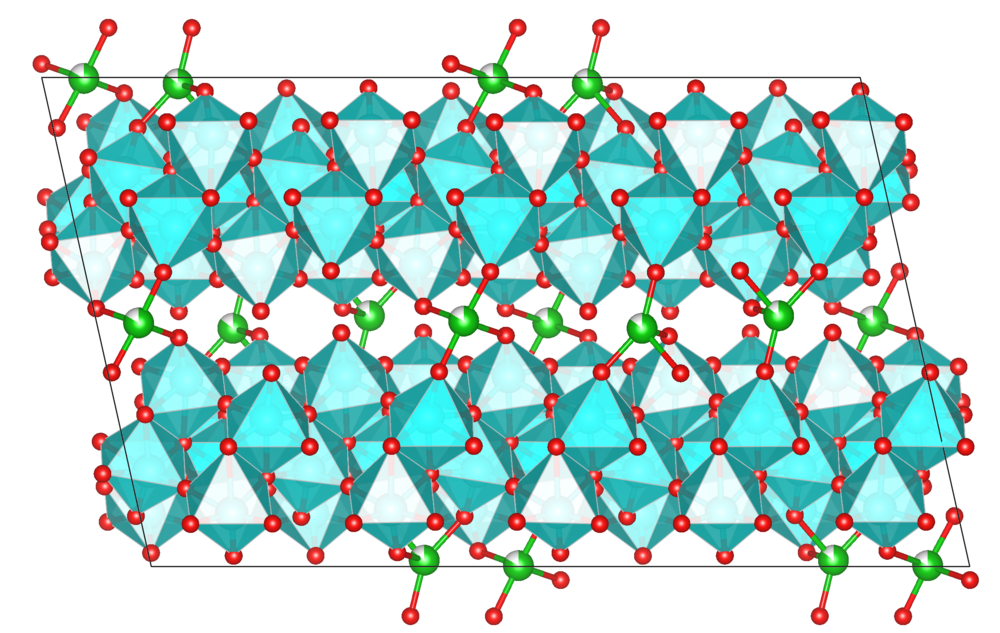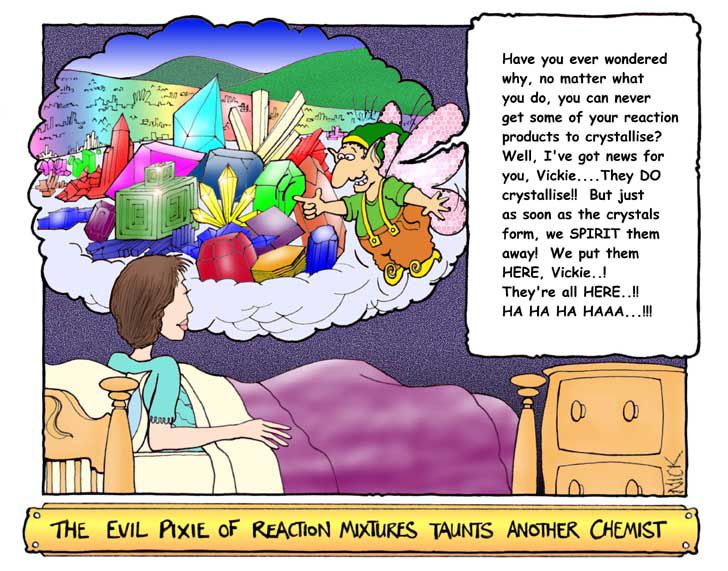The X-ray crystallography laboratory houses a Rigaku Oxford Synergy Dualflex diffractometer,
equipped with an AtlasS2 CCD detector.

This allows us to measure diffraction data using either MoKα or CuKα radiation
(λ = 0.71073 or 1.54184 Å, respectively).
An Oxford Cryostream low temperature device cools the crystals, usually to 100 K, to reduce atomic vibrations and increase the
precision of the data. The diffractometer and a crystallographer are shown on the left (but not on your phone) while the photo
on the right shows a close-up of the goniometer.
Single crystal X-ray crystallography studies underpin much of our research as well as many collaborations with other groups.
In addition to work using the Synergy system in-house, we make occasional use of synchrotron sources
such as Diamond.
Crystallography service If you have a crystal which you would like to have analysed then please:
- check with your supervisor
- fill in this form
- email the completed form to Prof. Christine McKenzie (mckenzie@sdu.dk) with cc to your supervisor.
- if your crystals are stable, place the sample and a printout of the form in the labelled SCXRD submission cupboard in the X-ray laboratory
- if the crystals are not stable discuss delivery with Prof McKenzie.
Dry crystals are fine provided they are stable, i.e. remain crystalline and don't lose solvent (and crystallinity)
- this is not always the case. If you're not sure about their stability it is best to keep the crystals wet
(ie in a little of the crystallising mother liquor). Put the crystals a few drops of solution in a
small (preferably straight-sided) vial and seal it well with parafilm. Make sure the sample is clearly labelled.

a crystal mounted on a polymer loop
a unit cell packing diagram
part of a diffraction pattern
thanks to Nick Kim

